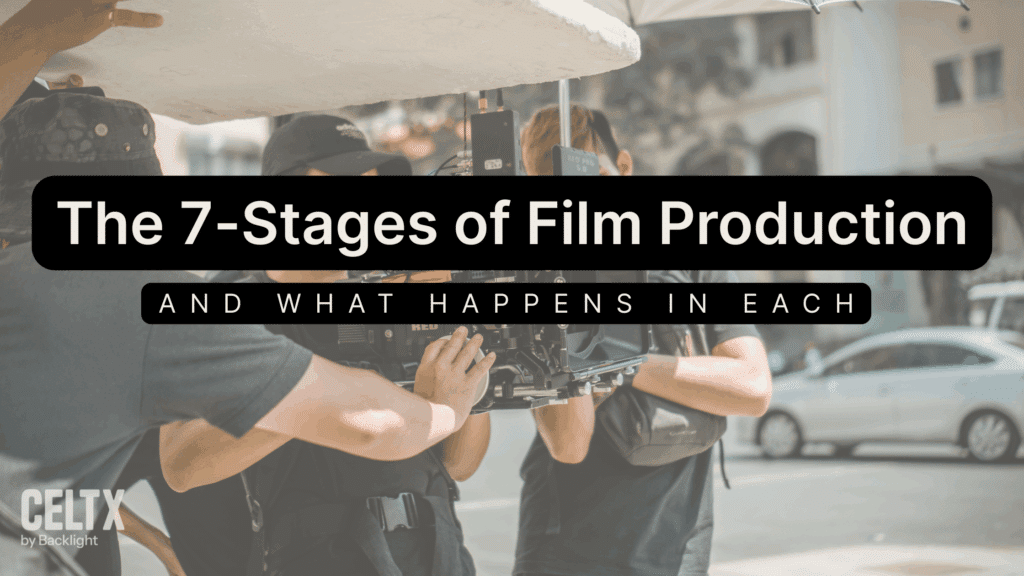
Bringing a film to life is a journey that demands creativity, logistics, business know-how, and most importantly, teamwork. It doesn’t matter if you’re crafting a short indie piece or a full-scale Hollywood blockbuster, every film follows a structured roadmap.
As filmmakers and screenwriters, it’s crucial that we understand this process to grasp how cinematic magic is made. And in today’s blog, we’ll be zooming in on each stage of this process.
Join us as we break down the seven key stages of film production, from development to distribution, and what really happens during each one. Along the way, we’ll explore the core responsibilities and even fill you in on some useful planning tools for your next movie.
Ready? Let’s take the first steps into the world of film production!
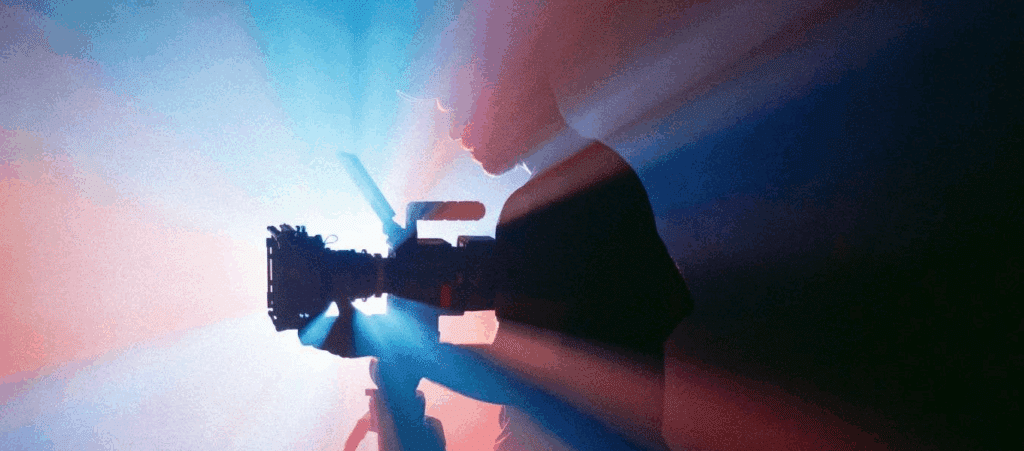
Table of Contents
- What Are the Stages of Film Production?
- Step by Step | A Breakdown of the Film Production Phases
- Planning Tools and Templates
- Conclusion
What Are the Stages of Film Production?
There are usually seven stages to the filmmaking process:
Additional Stages
- Marketing
- Exhibition
While each of these stages is distinct, they’re all interconnected. A misstep in one phase can cause ripple effects down the line, so careful planning and communication is essential at all times.
So, who are the key players throughout the process?
Well, while the team does evolve with each production phase, some roles remain central:
- The producer oversees the entire process from concept to completion.
- The director drives the film’s creative vision and works with cast and crew.
- The screenwriter crafts and revises the script.
- The cinematographer (Director of Photography) manages the visual aspects, including cameras and lighting.
- The editor shapes the final cut during post-production.
- The marketing and distribution teams handle promotional and release strategies.
A crew is made up of hundreds, sometimes thousands, including supporting roles such as casting directors, assistant directors, production designers, sound engineers, and VFX artists. These creatives step in at different stages to keep the machine moving.
Planning your next film? Start with tools that guide you through every production phase.
Sign up for Celtx today.
Step by Step | A Breakdown of the Film Production Phases
Stage 1| Development
Let’s start at the very beginning. Every production starts with an idea, a concept, or a compelling story that someone believes deserves to be told. This stage is also referred to as ‘in development’.
What Happens?
- Conceptualization
Ideas are brainstormed and explored, culminating in a pitch or treatment.
- Screenwriting
Based on the pitch/treatment, a screenwriter will write, rewrite, and polish a script. This stage can take months or even years depending on the project.
- Securing Rights and Funding
Producers will acquire the rights to existing materials such as books or plays or collaborate with screenwriters to develop an original script. This is also the point when they seek investors or studio backing.
Key Roles
- Screenwriter
- Producer
- Rights lawyer (or optioning the IP)
Tools
- Screenwriting software (such as Celtx or Final Draft)
- Budget proposals
- Lookbooks and pitch decks

Stage 2 | Pre-production
Once the script is locked and initial funding is secured, the project will move into pre-production. This phase is where all the planning and prep work is done before the camera starts rolling.
What Happens?
- Casting
Actors are auditioned and signed onto the project.
- Hiring Crew
Key positions such as the cinematographer, production designer and costume designer are all filled.
“When I was a kid, there was no collaboration; it’s you with a camera bossing your friends around. But as an adult, filmmaking is all about appreciating the talents of the people you surround yourself with and knowing you could never have made any of these films by yourself.” – Steven Spielberg
- Location Scouting
The director and locations scout will select places to shoot and secure them for the production phase.
- Storyboarding and Shot List
The storyboard and shot list will be created based on the screenplay to ensure everything is clear to everyone on set.
- Schedules and Budgets
Producers and their teams will create detailed production schedules and final budgets, so everything is in place.
Key Roles
- Line Producer
- Casting Director
- Production Designer
- Assistant Director (AD)
Tools
- Shot lists (can be created in Celtx!)
- Budgeting software
- Call sheet templates
- Location release forms
For more on pre-production, check out our blog here.
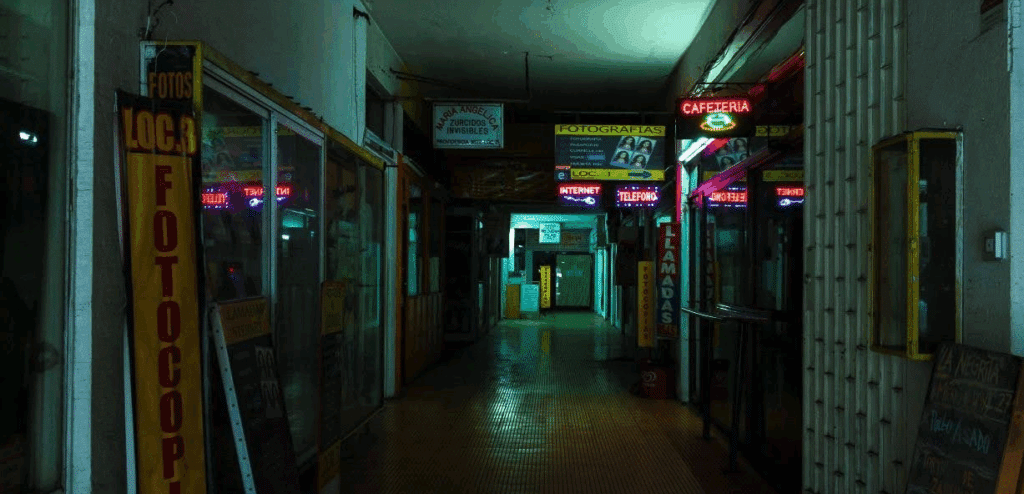
Stage 3 | Production
Here is where the filming happens! This is often the most exciting part but can also be the most hectic. Clear communication, staying on schedule, and budget discipline are essential to a shoot’s success.
What Happens?
- Principal Photography
Based on the storyboards, shot lists and schedules created in pre-production, the film is shot over the space of days, weeks or months depending on its scale.
- Daily Reviews
Also called ‘dailies’ or ‘rushes’, these are the raw footage viewed each day to ensure everything that needs to be captured, has been.
- Problem Solving
Setbacks, including weather, equipment issues, and delays are handled in real time to ensure production runs as smoothly as possible.
Key Roles
- Director
- Cinematographer
- Gaffer (lighting)
- Boom Operator (sound)
- Script Supervisor (continuity)
Tools
- Digital slates and camera reports
- Lighting and gear checklists
- Scene tracking templates
Stage 4 | Post-Production
Once the footage for the project is ‘in the can’, the next stage is to piece it all together into a polished final product. Post-production can take just as long as filming, or even longer depending on the amount of VFX and complexity of the edits needed.
What Happens?
- Editing
Footage is arranged into a coherent narrative.
- Sound Design and Music Scoring
The dialogue is cleaned up, effects are added, and the score is composed and mixed into the final cut.
- Visual Effects (VFX)
CGI and visual enhancements are created and integrated into the footage.
- Color Correction and Grading
The final look and mood of the film is fine-tuned, ensuring it’s consistent across each and every frame.
- Test Screenings
Rough cuts of the film are shown to limited audiences for feedback. If necessary, the editors will go back and fine tune scenes in the editing suite.
Key Roles
- Editor
- Sound Designer
- Colorist
- Composer
- VFX Supervisor
Tools
- Adobe Premiere Pro
- Avid Media Composer
- Pro Tools (audio)
- DaVinci Resolve (color)
- Frame.io (review and feedback)
Want to enhance your post-production knowledge? You guessed it, we have a blog for that: Post-Production 101.
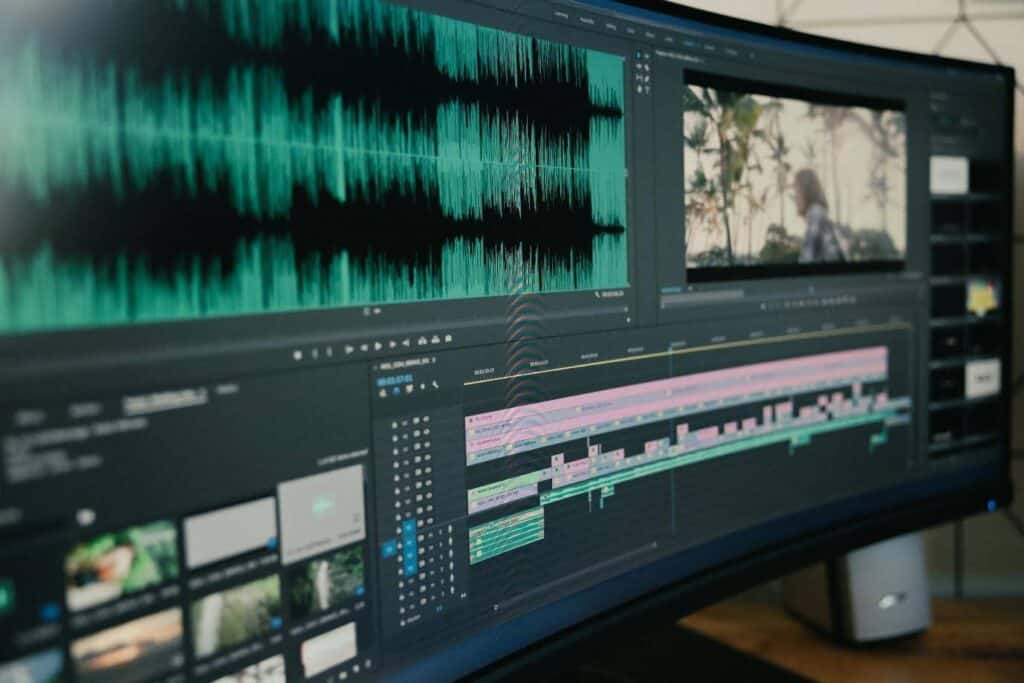
Juggling production stages? Celtx keeps your whole team aligned from script to screen
Click here to get started (it’s free!)
Stage 5 | Distribution
Even the best films won’t find their audience without a strategic release plan. Distribution ensures the film gets out into the world and reaches the right people. But once a movie has sold, it doesn’t mean it’s the endpoint. This phase of the production process can shape how the film is received, reviewed, and remembered.
What Happens?
- Securing Distribution Deals
Producers will negotiate with distributors, platforms or sales agents.
- Film Festivals and Markets
Screenings at festivals like Sundance and Cannes can build buzz and attract buyers. It’s also a great opportunity for the filmmakers to network and build relationships within the industry not just for the sake of their current project, but for future ones too.
- Release Strategy
Producers choose between theatrical, streaming, TV or hybrid release.
Key Roles
- Distributor
- Sales Agent
- Entertainment Lawyer
Tools
- Distribution agreements
- Festival submission platforms like FilmFreeway or Withoutabox
- ROI and analytics dashboard
To broaden your distribution horizons, click here.
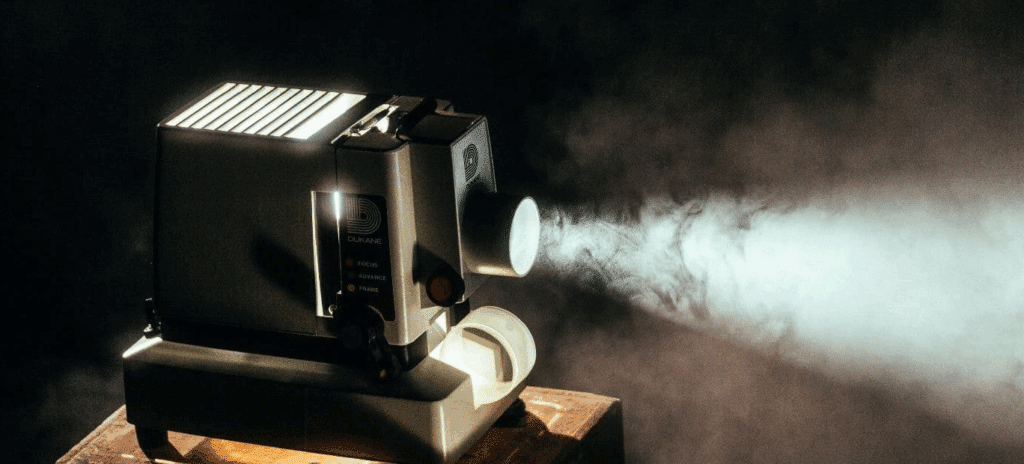
Additional Stage 1 | Marketing
Yes, marketing is technically part of distribution, however it is a standalone beat which can make or break a film’s commercial success. A strong marketing plan helps turn interest into ticket sales or clicks which is vital in today’s competitive media landscape.
What Happens?
- Trailer Creation
A compelling trailer and accompanying teasers are created and edited to draw the audience and potential buyers in.
- Press Kits and Publicity
The marketing team will create press releases, electronic press kits (EPKs) as well as organize interviews and PR campaigns.
- Social Media Campaigns
Alongside traditional media, productions are increasingly leveraging platforms like Instagram, TikTok and YouTube for outreach.
- Merchandising and Partnerships
The marketing team will also oversee the creation of merchandise, and foster brand collaborations to further expand the film’s horizons in terms of sales.
Key Roles
- Marketing Director
- Publicist
- Social Media Manager
- Graphic Designers
Tools
- Adobe Creative Suite
- Hootsuite or Later for scheduling
- Press kit templates

Additional Stage 2 | Exhibition
The final step of the production process focuses on how and where audiences will actually see the movie. Exhibition ensures a film reaches as many viewers as possible, in as many places and formats.
What Happens?
- Theatrical Runs
Many movies will book theaters and have viewings scheduled for audiences to book.
- Streaming Platforms
Other films will be places on services like Netflix, Amazon Prime or other niche streaming sites depending on the genre and target audience.
- International Markets
To ensure the movie is marketable overseas, movies can be localized and dubbed, ready for international release.
- Award Campaigns
Movies will be strategically positioned for award consideration. This is especially important for prestigious awards such as the Golden Globes and Academy Awards.
Key Roles
- Exhibition Manager
- Localization Specialists
- Award Campaign Strategists
Tools
- Screening analytics
- Translation and localization software
- Awards submission portals
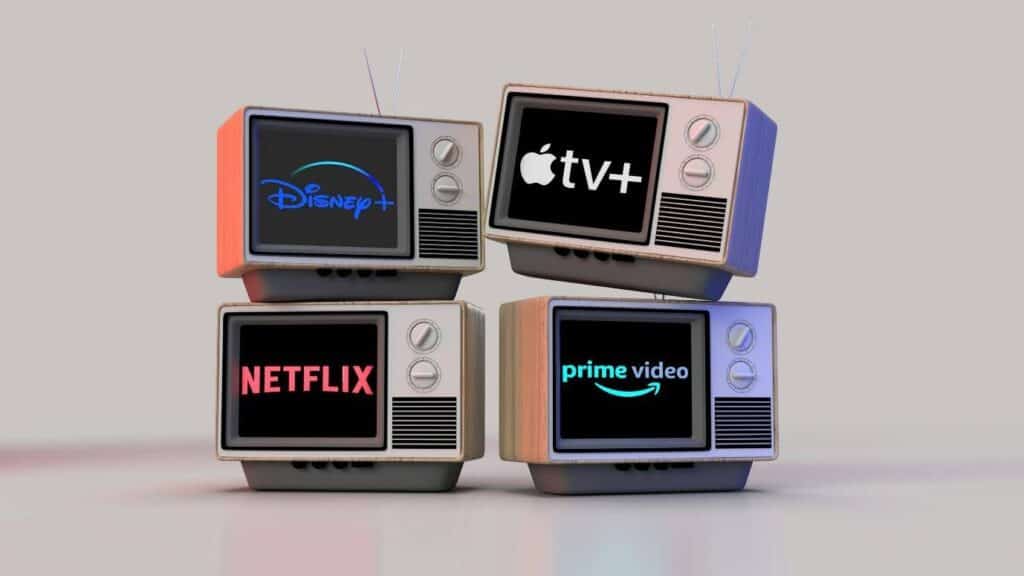
Planning Tools and Templates
As you can probably tell, proper planning is crucial in all stages of the filmmaking process. We’ve listed some valuable tools throughout todays blog, however, here are our top recommendations:
Scriptwriting Software
These programs are specifically designed for screenwriting and follow industry-standard formatting which is crucial when sharing scripts with producers, directors, agents, and studios.
By using these tools, you’ll eliminate formatting headaches and streamline your revision and collaboration process. Most importantly, you’ll ensure your script is production-ready.
Not sure which screenwriting software is right for you? Check out our guide: Choosing the Best Screenwriting Software for Your Needs.
Production Calendars and Scheduling
Keeping production running on time and within budget is another critical factor you must consider. These tools help break down the script, organize shoot days with call sheets and shot lists, track availability, and manage logistics.
Shot Lists and Storyboards
Visual planning is essential to align the director, cinematographer, and production team before shooting begins. No tool is the same, so make sure to research them carefully. Why not start with our rundown of the Top 10 Best Storyboarding Software?
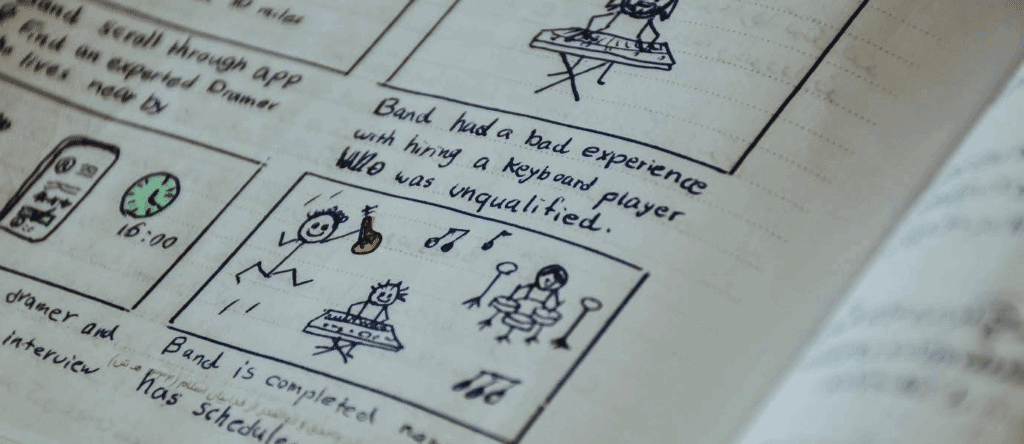
Budgeting
After all, filmmaking is a business, so the budget is the backbone of any and all productions. These tools help producers plan, track, and adjust financials based on the needs of each department.
Not only that, but proper budgeting can help secure finding, prevent overspending and keep stakeholders informed all the way through the production process.
Collaboration Platforms
A film involves sometimes hundreds of people working together so smooth collaboration is essential, especially during the pre- and post-production phases. The platforms above are just some of the tools you can use to ensure your whole team stays aligned while reducing miscommunication.
Post-Production Software
Professional editing software makes sure you have a final product, with the depth and control needed to deliver on your creative vision.
Each of these tools plays a pivotal role in reducing friction at specific stages of production. We urge you to use industry-standard possible when you’re able to, whether you’re developing a short film or a feature film.
Equipping yourself with the right tools is one of the smartest investments you can make as a filmmaker.
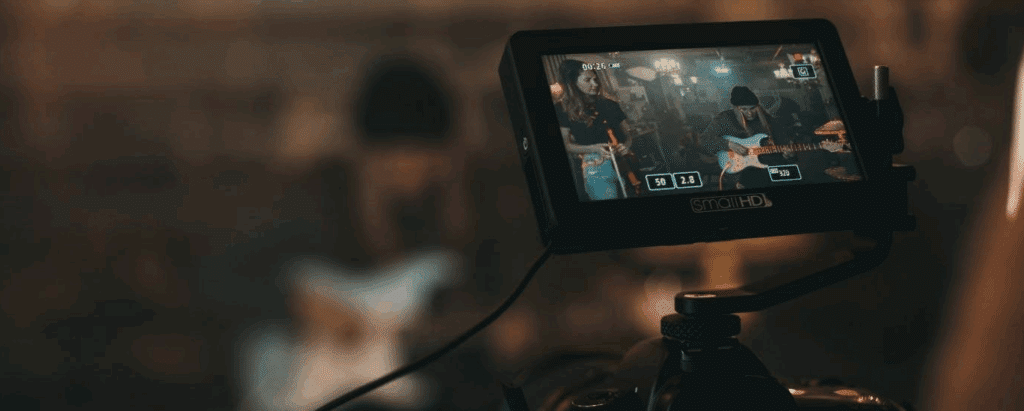
Conclusion
Creating a film is a monumental endeavor, but one that becomes manageable and rewarding when broken down into structured stages. From that very first idea to the credits rolling in a packed theater or streaming on a screen at home, each phase of production plays a critical role in the film’s success.
Whether you’re a student filmmaker, an aspiring producer, or a curious movie buff, understanding these seven stages, and the roles, tools, and tasks that come with them, will deepen your appreciation for the art and science of filmmaking.
With planning, collaboration, and the right team, your vision can move from script to screen and beyond.
Take your project from concept to completion—all in Celtx.
Start planning your production today!
Up Next:
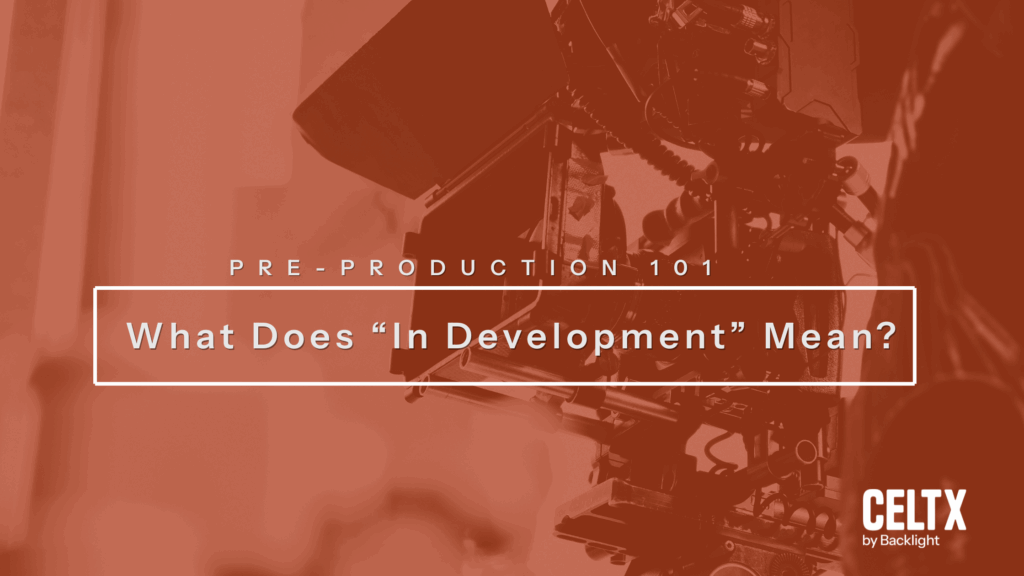
What Does it Mean When a Film is “In Development”?
Curious what kicks off the production journey? This is your guide! Learn how to shape your idea into a fully-backed project.
